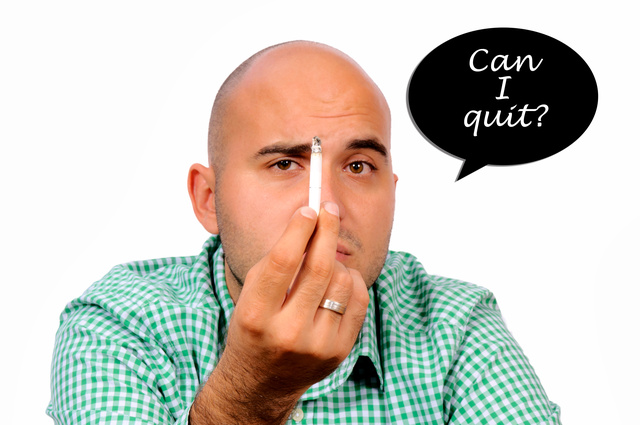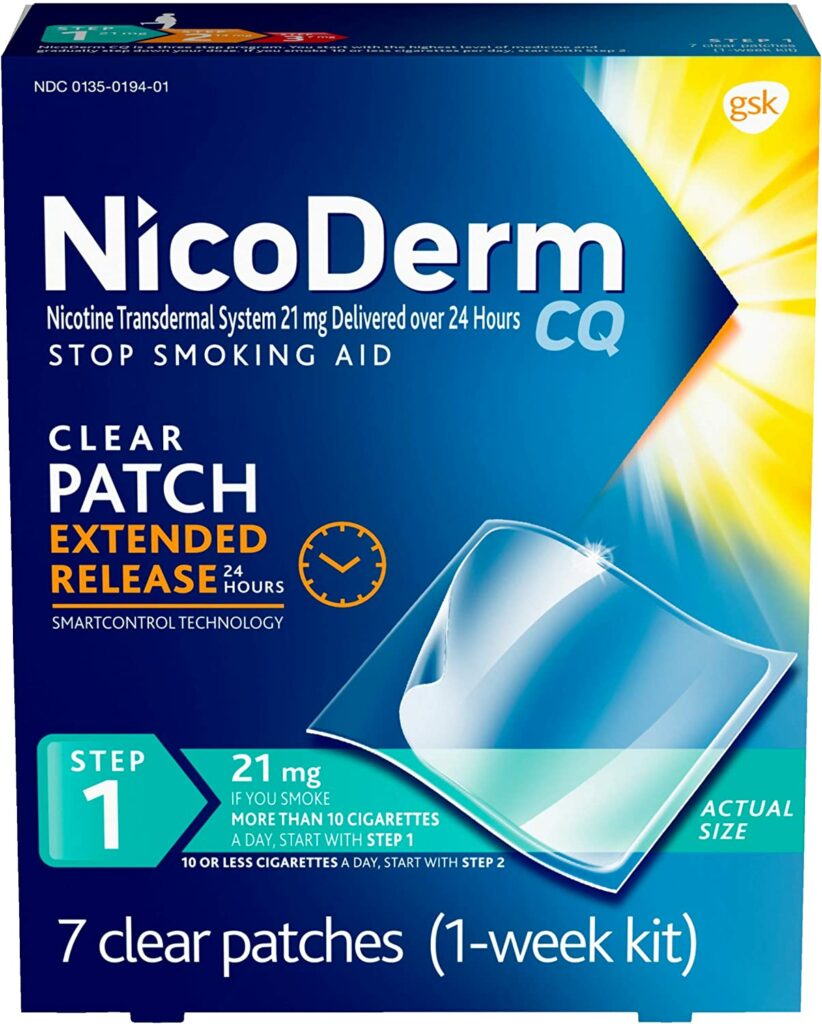Learning how to stop smoking for good is possibly one of the most challenging yet rewarding journeys you can undertake. Kicking the smoking habit can seem insurmountable, but just imagine a life where you wake up every day feeling energized, with clearer lungs and a healthier body.
Picture yourself free from the constant urge to light up, able to fully enjoy life’s moments without the shadow of cigarettes hanging over you. This article is not just about quitting smoking; it’s about reclaiming your life and discovering the extraordinary benefits of living smoke-free.
If you are truly ready to take the first step toward a healthier, happier you with no “ifs” and “buts,” read on to learn what got you into the grip of cigarettes, and some practical, actionable tips you can employ to arm yourself with the tools you need to stop smoking for good.
Why Smoking is Addictive – Quit Smoking in Older Adults
Smoking is notoriously addictive, and it’s not just because of a simple habit. The real culprit is nicotine, a powerful substance found in tobacco. When you inhale cigarette smoke, nicotine quickly enters your bloodstream and reaches your brain within seconds.
It triggers the release of dopamine, a chemical that creates feelings of pleasure and relaxation. This rush of dopamine is what makes smoking feel so rewarding, creating a cycle of dependence.
Over time, your brain starts to crave these dopamine hits, and that is when addiction takes hold. You might find yourself needing to smoke more frequently to achieve the same sense of satisfaction, and when you try to quit, withdrawal symptoms like irritability, anxiety, and intense cravings can make it incredibly tough to stop.
Understanding the addictive nature of nicotine is the first step toward breaking free from its grip. Armed with this knowledge, you can take control and make informed choices to overcome this powerful addiction. This article provides effective methods on how to stop smoking for good by outsmarting nicotine and reclaiming your freedom.
Nicotine affects your health both physically and mentally. You become dependent on smoking for the sense of pleasure and relaxation. It becomes a part of your life. Slowly, it deteriorates your health and quality of life. Find out the damage caused by smoking and the alarming need not only to seek how to quit smoking for seniors, but in general.
Damage Caused by Smoking

Respiratory Disorders
Smoking doesn’t just harm your lungs; it wreaks havoc on nearly every organ in your body. Picture this: with each puff, over 7,000 chemicals flood your system, many of which are toxic and some even carcinogenic. This toxic cocktail starts by attacking your respiratory system, leading to chronic bronchitis, emphysema, and the notorious smoker’s cough. But the damage doesn’t stop there.
Damage to the Cardiovascular System
Your heart and blood vessels are also under siege. Smoking damages the cardiovascular system. Smoking increases your risk of heart disease and stroke by contributing to plaque buildup in your arteries, which can lead to heart attacks or sudden cardiac events. It is a major culprit in high blood pressure, further straining your cardiovascular system.
Accelerates Aging
Then there’s the impact on your appearance. Smoking accelerates aging, causing premature wrinkles, dull skin, and yellowed teeth.
Increases Risk of Cancers
Inside, it’s even worse: your risk of cancers, particularly lung cancer, skyrockets, but it also increases your chances of developing cancers of the mouth, throat, esophagus, and pancreas.
Affects Reproductive Health
Reproductive health isn’t spared either as infertility tops the list. For men, smoking can lead to erectile dysfunction. For women, it can cause complications in pregnancy, premature birth, and low birth weight.
Causes Other Health Problems
Smoking is associated with a rapid risk of numerous other health problems, including diabetes, rheumatoid arthritis, osteoporosis, and vision loss.
At this stage, you are probably thinking that you wish you had known about all this before ever taking your first puff! Fortunately, you’ve taken the first stop to recovery by reading this article
How to Stop Smoking for Good – 10 Point Plan
As with anything else in life, you MUST develop a plan. If wishes were horses, beggars would ride! Without a plan, you are already setting up yourself to fail! Breaking free from smoking is a monumental challenge, but with the right strategies, it’s entirely achievable.
This 4 -Stage frame work of proven methods can help you quit smoking for good and reclaim a healthier, smoke-free life. These are: Prep Work, In the Trenches (“the doing stage”), Dealing with Cravings, and, Persistence.
Prep Work Stage
1. Set a Quit Date: Choose a date to leave smoking and mark it on your calendar. Choosing a specific date to quit gives you a concrete goal to work towards. Make sure it’s within the next two weeks to keep your motivation high. Having a precise quit date can help you mentally prepare for the transition and commit to your goal of becoming smoke-free.
2. Understand Your Triggers: Identify the situations, emotions, or activities that trigger your urge to smoke. Common triggers include stress, social situations, anger, certain times of the day or certain routines. Knowing your triggers allows you to develop alternative coping mechanisms, such as deep breathing, exercise, or engaging in a hobby.
3. Create a Quit Plan: Develop a comprehensive quit plan outlining your reasons for quitting, strategies for managing cravings, and coping mechanisms for dealing with withdrawal symptoms. Share your quit plan with supportive friends, family members, or healthcare professionals who can offer encouragement and accountability.
In The Trenches Stage
4. Seek Support: Don’t go it alone. Don’t hesitate to seek support from friends, family, or support groups. Surround yourself with positive influences who cheer you on and encourage you during challenging times. Think about joining a smoking cessation program or seeking counseling to help you navigate the quitting process.
5. Consider Nicotine Replacement Therapy (NRT)
Nicotine patches, gum, lozenges, inhalers, or nasal sprays can help ease withdrawal symptoms by providing a controlled dose of nicotine without the harmful chemicals found in cigarettes. Consult your doctor to find the best option for you.
Your doctor may choose to put you on certain medications that can help reduce cravings and withdrawal symptoms
6. Develop new routines
Change up your daily routine to break the association with smoking. If you always smoke with your morning coffee, switch to tea for a while or take a brisk walk instead. Disrupting your usual patterns can weaken the habit.
Dealing with the Cravings
7. Stay Active: Exercise regularly to distract yourself from cravings and reduce stress. Physical activity produces endorphins, chemicals that promote happiness and well-being, which can help alleviate withdrawal symptoms and improve mood.
Exercise is a fantastic way to manage stress, improve your mood, and distract yourself from cravings. Whether it’s a brisk walk, yoga, or hitting the gym, staying active helps your body heal and keeps your mind focused on your health goals.
8. Practice Relaxation Techniques: Do not rely on smoking; add relaxation techniques such as yoga and meditation to keep yourself busy and relax your muscles and mind. Stress is a major trigger for smoking. Incorporate mindfulness, meditation, or deep-breathing exercises into your daily routine to manage stress and maintain a calm, focused mind. Try using a white noise sound machine. It can be very soothing to the nerves, and there are many to choose from in the marketplace.
9. Reward Yourself: Celebrate your milestones and achievements in becoming smoke-free. Treat yourself to rewards such as a massage, a movie night, or a special meal whenever you reach a significant milestone in your quit journey.
Celebrate your milestones along the way. Treat yourself to something special when you reach a week, a month, or a year smoke-free. Rewards can boost your motivation and give you something positive to look forward to.
Persistence Stage
10. Be Persistent
Relapses can happen, but don’t let them derail your efforts. If you slip up, learn from the experience and get back on track. Every day without smoking is a victory, and persistence is key to long-term success.
By adopting these strategies, you’re not just quitting smoking; you are embracing a healthier, more vibrant life.
How to Quit Smoking For Seniors – Important Considerations
It can be even more challenging to quit smoking in older adults as many have been smoking for the better part of their adult years, but the health gains, at any age are substantial. The Plan remains the same, but there are some important considerations which are discussed in this section
Quitting smoking has immediate and long-term health benefits, even for older adults. Within days, blood pressure and heart rate normalize, and lung function begins to improve. Over time, the risk of heart disease, stroke, and cancer decrease significantly, enhancing overall health and longevity.
1. To Quit smoking in Older Adults First Consult Your Healthcare Provider
Older adults should consult their healthcare provider before quitting to tailor a quit plan that considers their overall health and any existing medical conditions. Your doctor can recommend appropriate nicotine replacement therapies (NRT) or medications, and monitor your progress.
2. Social Support
Social support is important. Engage family, friends, and community resources in your quit plan. Many older adults find success in group therapy or support groups specifically designed for their age group, where they can share experiences and encouragement.
There are some mental health considerations because quitting smoking can be stressful and might exacerbate feelings of anxiety or depression, especially in older adults. Regular check-ins with a mental health professional can provide necessary support and coping strategies..
3. Potential Interaction of Prescription Medication
Certain prescription medications can help in quitting. Seniors must discuss these options with a healthcare provider to manage potential side effects and interactions with other medications they may be taking.
4. Challenges of Withdrawal Symptoms
Withdrawal symptoms can be particularly challenging for older adults. These might include irritability, sleep disturbances, and increased appetite. Your healthcare provider can help manage these symptoms with appropriate interventions and support.
5. Nutritional Considerations
Good nutrition is important to counteract potential weight gain and to support overall health during the quitting process. Consider consulting a dietitian for personalized advice on maintaining a balanced diet.
Ways to Quit Smoking Naturally
There are several ways to quit smoking naturally. These include:
- Behavioral Therapy: Working with a therapist to identify triggers and develop coping strategies.
- Mindfulness and Meditation: Techniques to reduce stress and manage cravings.
- Exercise: Regular physical activity to boost mood and reduce withdrawal symptoms.
- Herbal Remedies: Using natural supplements like lobelia, ginseng, or St. John’s Wort (consult a healthcare provider first).
- Diet and Hydration: Eating a healthy diet and staying hydrated to support overall health and manage cravings. Combining these natural approaches can enhance your chances of quitting successfully.
Conclusion – How to Stop Smoking for Good
Taking a decision to learn how to stop smoking for good is a monumental milestone in the life of a smoker. It all starts with a shift in mindset.
Congratulations on taking this courageous step towards a smoke-free life! By adopting the strategies outlined here, you’ve embarked on a journey of self-discovery and transformation.
Remember, quitting smoking isn’t just about breaking a habit; it’s about reclaiming your health, your happiness, and your freedom. Embrace the challenges, celebrate the victories, and know that you’re capable of achieving anything you set your mind to.
Consider leaving a comment below about your previous struggles with smoking or your current motivators for wanting to break the cycle.
Related Articles
- 11 Heart Health Tips for Seniors – How to Take Care of Your Heart
- Heart Health Facts – Why they are important
FAQ
What are the best methods for how to stop smoking for good?
The best methods include setting a quit date, using nicotine replacement therapy (NRT), seeking support from friends, family, or support groups, and consulting with a healthcare provider for medications like bupropion or varenicline. Combining these strategies significantly increases the chances of success
How can I manage withdrawal symptoms when quitting smoking?
Manage withdrawal symptoms by using NRT, staying physically active, practicing relaxation techniques like deep breathing and meditation, and maintaining a healthy diet. Support from healthcare providers and quit-smoking programs can also help alleviate symptoms
Are there any special tips to quit smoking cigarettes in older adults?
Older adults face unique challenges when quitting smoking, but there are tailored strategies to help: First consult your Healthcare Provider, Review your medications, plan how to address withdrawal symptoms, seek social support and embrace healthy habits.
Are there any ways to quit smoking naturally?
There are several natural ways to quit smoking include behavioral therapy, mindfulness, exercise, herbal remedies (like lobelia or ginseng), and maintaining a healthy diet and hydration. These approaches help manage cravings and reduce withdrawal symptoms, offering holistic support for those aiming to quit smoking naturally.
What are the health benefits of quitting smoking?
Quitting smoking improves lung function, lowers the risk of heart disease, stroke, and cancer, and enhances overall health. Immediate benefits include normalized blood pressure and heart rate, while long-term benefits include reduced risks of chronic diseases and improved quality of life.
What are the most helpful tips to quit smoking cigarettes?
The most helpful tips to quit smoking cigarettes include setting a quit date, seeking support from friends, family, or support groups, using nicotine replacement therapy (NRT) or prescription medications, avoiding triggers, staying busy, and rewarding yourself for milestones. Combining these strategies, along with persistence and patience, significantly increases the chances of successfully quitting smoking for good.
References
Health Canada website. Quit with Confidence: How to Quit. https://www.canada.ca/en/health-canada/services/smoking-tobacco/quit-smoking/how.html






